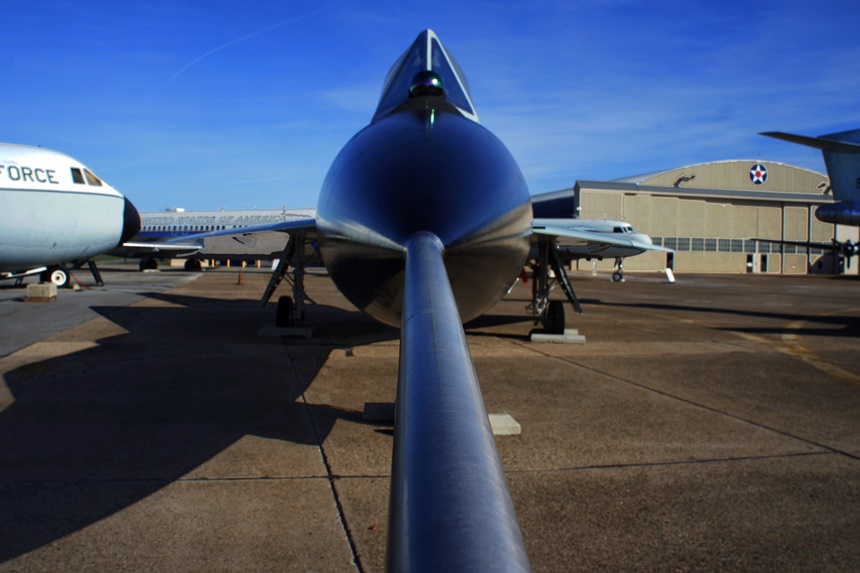Every branch of the U.S. military has at least one museum, but many of the country’s most lavish and extensive military exhibits are private collections. Here are a few that are monuments to both America’s military past and the passion of those who preserve it.
Motts Military Museum
Groveport, Ohio
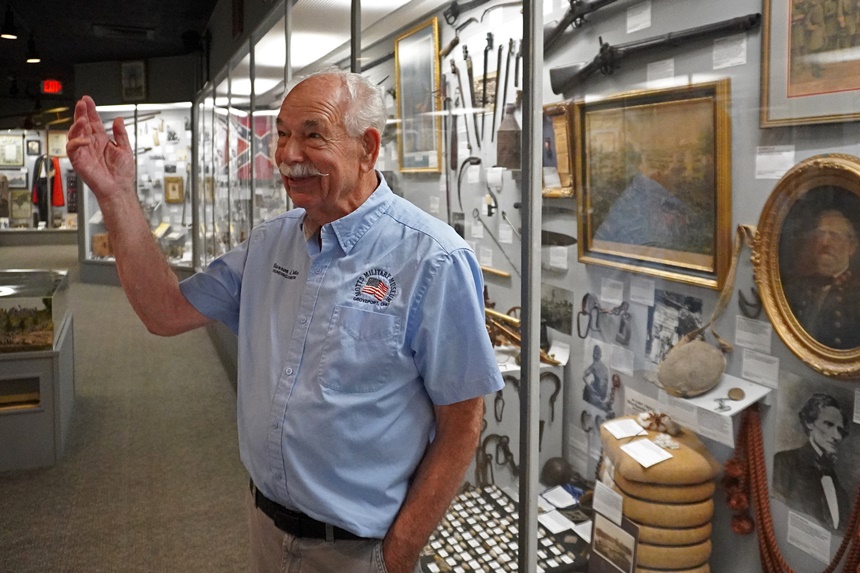
Warren Motts is gazing through a crowded display case, focusing on an authentic sample of hard tack: the dense, nearly indestructible 3-inch-square biscuit that nourished soldiers on both sides of the American Civil War.
“That stuff is probably just as hard now as it was 150 years ago,” Motts muses.
It’s a tiny relic of war, barely noticeable among the hundreds of thousands of items on display in this 5,100-square-foot museum. But from hard tack to helicopters, each item holds a special place in the heart of Motts, whose sprawling Motts Military Museum had its start in his home way back in 1987.
Now in his mid-80s, Motts was a successful commercial photographer in nearby Columbus when he started collecting war memorabilia. From the French and Indian War to Afghanistan, Motts has an insatiable appetite for chronicling the country’s military history.
A casual stroll along the museum’s long exhibit halls is a walk through military moments large and small: From the Revolution, a powder horn and a lock of George Washington’s hair. From the Civil War, a lens from photographer Mathew Brady’s camera, body hooks used to drag the dead off the battlefield, and field ballots that allowed Union soldiers to vote for or against President Abraham Lincoln. There’s a World War I foot-pump organ for religious services, a World War II WAC uniform, a Desert Storm camouflage outfit, and a Vietnam era pocket Bible — with a Viet Cong bullet lodged inside.
Perhaps the most sobering item on display: a transport case that once contained the coffin of a young Centerburg, Ohio, soldier killed in the South Pacific during World War II.
“They brought the casket to the local funeral home in this box,” Motts says, “and the boy’s father asked, ‘What are you going to do with that?’ They said ‘Well, we destroy these things.’
“The dad said, ‘You can’t do that! My son was in there!’ He brought it home, put it in the barn, and there it stayed for 50 years until the family gave it to me.”
Motts is particularly good at getting people to give him things. Exhibit A: In a large shed behind the museum, he opens a sliding door to reveal a NYFD fire truck, crushed and twisted. It had been in the wrong place at the wrong time when the World Trade Center collapsed on 9/11. He’s planning to give it a place of honor in a new museum wing.
“So, you see,” he says, casting his eye on the somber display, “I’ve still got a few things to accomplish around here.”
National Museum of Military Vehicles
Dubois, Wyoming
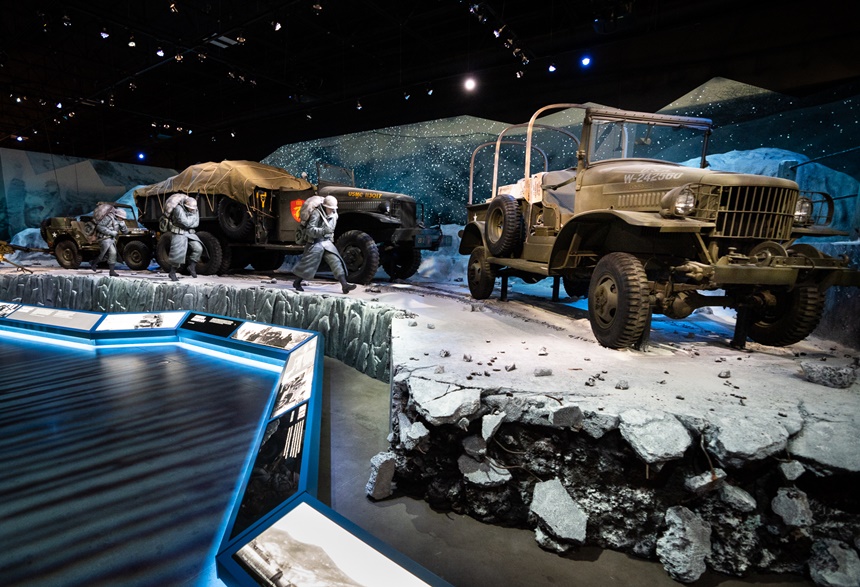
It takes a certain amount of chutzpah to slap the word “National” on your private military collection, but then, Dan Starks is not one to minimize his accomplishment.
“This is, as far as I know, the largest collection of military vehicles in the world,” he says.
You’d be dumb to argue the point: Starks’ $100 million, 160,000-square-foot museum — opened in 2020 — is home to nearly 500 fully restored military vehicles, artillery pieces, naval vessels, and aircraft dating back to 1897.
A lifelong history buff (in fourth grade, his history teacher let him give the Civil War lecture), Starks — a rancher, lawyer, and businessman — bought his first tank for its scrap value in 2010.
“My dream was to drive it in the Dubois Fourth of July parade,” he says. That first tank turned out to be a lost cause — but now, the highlight of every Dubois July 4th is a whole procession of Starks’ tanks, dating back to World War I, rolling down Ramshorn Avenue.
Already, 40,000 people a year find their way to his museum, but Starks says the exhibits are more than a history-based diversion.
“The vehicles are really just a starting point,” he says. “What I really want people to learn about is service and sacrifice. Very few people even know someone who’s in the military. Some schools these days aren’t even teaching World War II.
“Too many young Americans with good hearts and good intentions know almost nothing about manufacturing and military capability. They don’t understand the history of isolationism, and how that well-intentioned policy led to four percent of the world population being killed in World War II. They know next to nothing about our Vietnam veterans.”
Once they get past the cool tanks and other vehicles, the museum’s state-of-the-art displays and videos fill in the contextual details.
“Maybe it’s a bait-and-switch operation,” Starks muses. “But it’s worth it.”
The Air Mobility Command Museum
Dover, Delaware
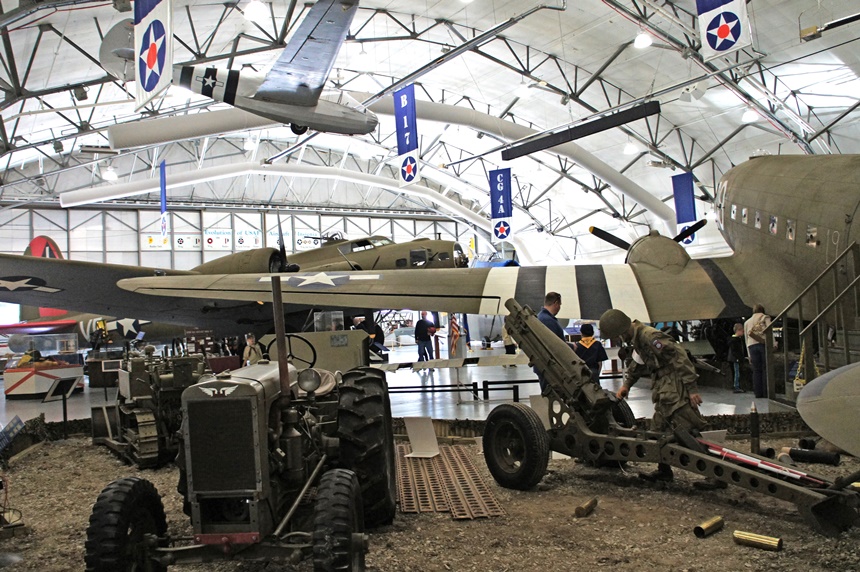
The non-profit organization that runs this air history museum on the outskirts of Dover Air Force Base had its beginnings in 1978 with a junker B-17 that the Air Force invited the group to restore.
Today the museum — which focuses on the history of the Air Force’s role in delivering soldiers and supplies worldwide — is home to more than 30 historic aircraft, including a VC-9C jet that served as an occasional Air Force One to presidents from Ronald Reagan to George W. Bush.
Approaching the museum from the highway, though, what catches your eye is the enormous, bulbous profile of the museum’s C-124 Globemaster, a three-story-tall monster that hauled tanks, bulldozers, and trucks to far-flung outposts including Korea and Antarctica.
Because the museum is staffed by volunteers, not all of the planes are open to the public at the same time. If you’re lucky, the day you visit you’ll get to climb the long portable staircase to the Globemaster’s cockpit or hear your voice echo in the cavernous cargo bay of the museum’s Boeing KC-97 Stratofreighter. On Open Cockpit Day, the third Sunday of each month, April through October, veteran pilots sit at their old controls and regale guests with tales of their airborne exploits.
National Museum of the Pacific War
Fredericksburg, Texas
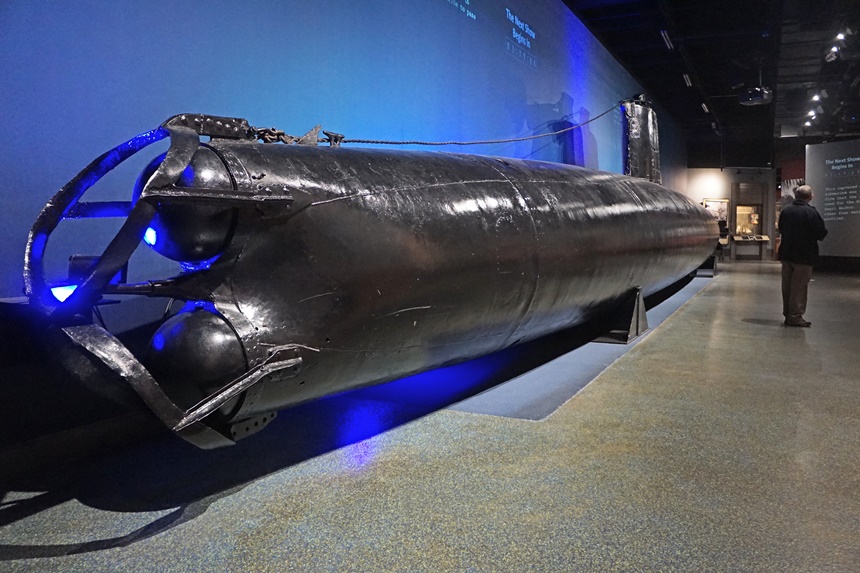
When you want to build a sea-centric war museum in the middle of Texas Hill Country, 1,000 miles from the nearest ocean, it helps to have a legendary admiral behind you.
Even before he rose to commander of the Pacific fleet during World War II, Admiral Chester Nimitz was a hero in his hometown of Fredericksburg. In 1964, two years before Nimitz died, local boosters launched a museum in the old wooden hotel on Main Street that bore his family name.
Today, in an ultra-modern exhibit space, the museum boasts World War II-era relics unique in the world. Among them is one that, aside from the sunken wreckage of the battleship Arizona, may well the most striking surviving artifact from the attack on Pearl Harbor: a fully intact Japanese “midget” submarine that served as part of the Japanese fleet’s vanguard.
Black and frighteningly sleek, the 76-foot-long, 40-ton submarine known only by its assigned battle number, HA-19, arrived at Hawaii even before the first bomb fell on December 7, 1941. It was captured after running aground on a beach.
During the war, the sub was trucked around the country as a fundraising curiosity. By the 1970s it was lying in pieces in Key West, Florida, nearly forgotten. Then board members of the Fredericksburg museum, looking for a signature exhibit, got the bright idea to clean it up and give it a good home. The U.S. Parks Service resisted the notion, preferring a spot near the Arizona at Pearl Harbor, but eventually (and predictably), the Texans wore them down.
And so HA-19 ended up in a region known mostly for its peaches, pecans, and Tempranillo wine.
Mounted against a wide sea-blue wall in the museum’s President George H.W. Bush gallery, HA-19 seems surprisingly imposing, considering it has always been referred to as a “midget” submarine. A streamlined hulk of steel with a single propeller, it resembles an oversized torpedo with a conning tower.
Elsewhere in the museum, visitors can walk through a recreation of a Pacific island battlefield, get up close to the B-25 plane similar to those used in the Doolittle Raid on Japan, and walk around a Japanese “Rex” float plane.
Every once in a while, rumblings still arise regarding HA-19’s Texas locale. But the museum’s president, Gen. Michael Hagee (USMC Ret.) isn’t worried.
“That thing is cemented into the Bush Gallery,” says Hagee. “It’s not going anywhere.”
American Heritage Museum
Hudson, Massachusetts
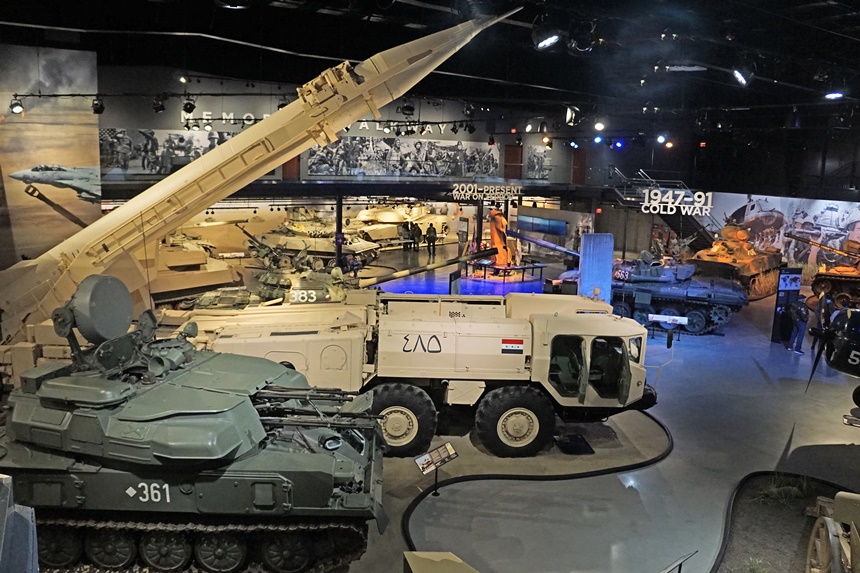
Military tank crews are called “tankers,” and although he never served in the Armed Forces, you could say Jacques Littlefield was tanker first class. A manufacturing engineer by profession, he bought his first World War II-era military vehicle at age 26 and, by the time of his early death at 58, owned about 160 working tanks and other armored vehicles.
Today Littlefield’s collection comprises the heart of the American Heritage Museum, a Smithsonian-quality showplace outside Boston. To enter the museum and emerge on the main gallery’s elevated walkway is to look out on a sweeping history of American tank warfare throughout the 20th century. Suspended from the ceiling, seemingly ready to swoop down for attack, hang a German Messerschmitt fighter, a Nazi V-1 flying bomb, and the last surviving American P-40 fighter plane from Pearl Harbor. They’re from the collection of the Collings Foundation, a world-famous aviation history and educational organization, which owns the museum and operates a museum/restoration facility on the grounds.
In an age of hands-on museums, this one may be one of the handsiest: For a $995 tax deductible donation, you, too, can take the controls of a World War II Chaffee tank (or just ride along for only $595).
When I visited the museum a few years ago, I noticed in one corner a large jumble of building materials; a seemingly random collection of well-worn lumber, doors, and masonry.
“That’s a cell from the Hanoi Hilton,” my host said solemnly, using the ironic name given to the notorious North Vietnamese prison where hundreds of U.S. prisoners of war, including the late Senator John McCain, were held during the conflict.
“The Vietnamese government was demolishing the place to build a commercial building, and some people thought at least a part of it should be preserved.”
A two-prisoner cell — including concrete “beds” and shackles — was dismantled and placed in storage in Vietnam. For six years that’s where the cell remained, awaiting normalization of relations between the U.S. and Vietnam. And even after, the dismantled cell spent another decade in storage in Canada until its caretakers selected the American Heritage Museum as its final home.
Today, the reconstructed cell is the centerpiece of the museum’s still-evolving “POW Experience” exhibit. It was finished in February 2023, the 50th anniversary of Operation Homecoming, when the surviving U.S. POWs returned home.
The Wright Museum of World War II
Wolfeboro, New Hampshire
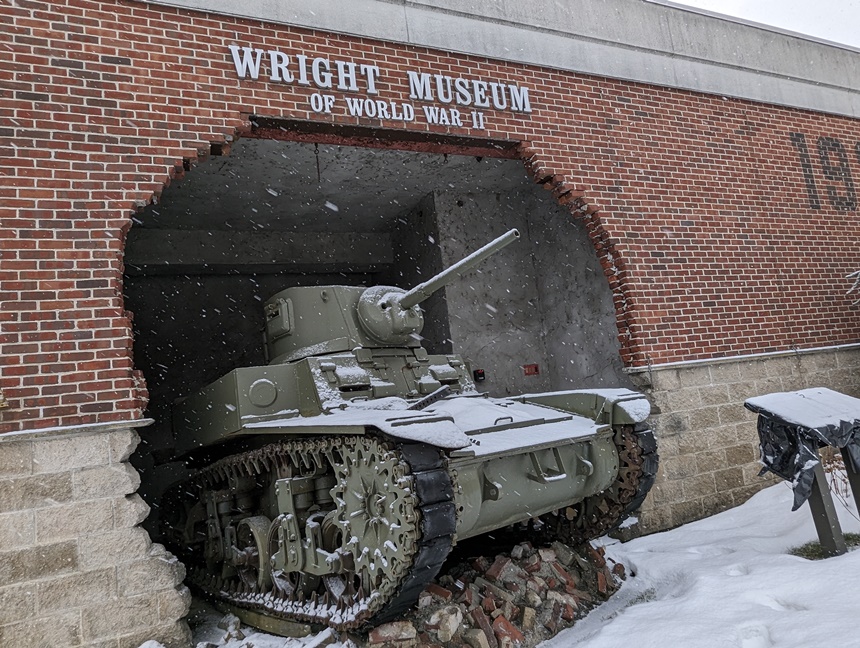
There’s nothing subtle about the exterior of The Wright Museum: The place announces itself with a M3A1 Stuart tank crashing through the brick wall, seemingly plowing its way through an enemy stronghold.
The place was the dreamchild of a local history buff named David Wright, a Korean War vet who for many years offered his collection of restored World War II military vehicles for use in parades. His extensive holdings found a permanent home in 1994: a 20,000-square-foot museum focusing on the U.S. war effort — at home and abroad — from 1939 through 1945.
Among the museum’s 14,000 items you’ll find the usual Big Stuff: tanks, jeeps, planes, and armored vehicles, all in perfect working order. But the Wright Museum also has an eye for the small things, particularly when it comes to the home front: Exhibits relate wartime fashions (skirts got shorter to preserve fabric), a sample victory garden, a 1940s family in their kitchen (with Dad noticeably absent), and a reconstructed war-era soda fountain.
There’s also a replica soldier’s stateside barracks, complete with a Betty Grable pinup and a copy of Yank, the weekly magazine published by the U.S. military throughout the war — a reminder that the realities of conflict reverberated far beyond the battlefield.
Become a Saturday Evening Post member and enjoy unlimited access. Subscribe now
